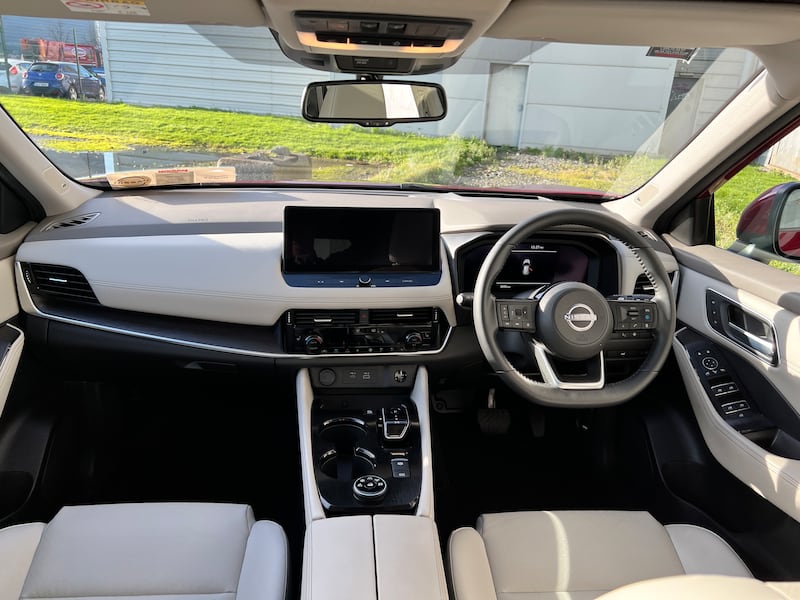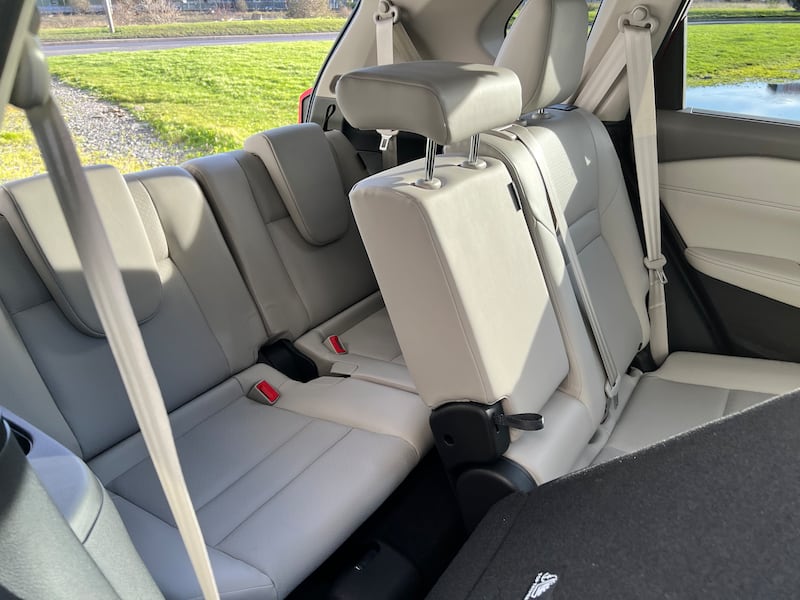I’ve always felt that the Nissan X-Trail has never quite had a fair crack of the whip. It’s a car long overshadowed in Irish and European terms by its smaller, more successful brother, the Qashqai. While that might have been fair enough when thinking of the X-Trail that’s just departed – a somewhat dull car that even looked like a Qashqai had been inflated with a bike pump – there have been some truly impressive models over the years.
Think back to the second-generation X-Trail, launched in 2007. It was square, and a bit bug-eyed, and probably undermined itself a bit by looking too much like its predecessor at a time when the first-gen Qashqai was rewriting the SUV rulebook. But it was actually a terrific car, far better to drive than any mid-size SUV had a right to be at the time, and enormously practical with it.
While the Qashqai has since gone on to world domination, I reckon Nissan might have another sleeper hit on its hands with this latest X-Trail. As it has long been, this one is in its essentials an up-gunned Qashqai, taking that car’s platform and propulsion and adding more space, more seats (seven seats are optional), and a dash more class.
It’s also the first time we’ve had a chance to drive Nissan’s new “e-Power” hybrid in Ireland. This basically turns hybrid orthodoxy on its head. Whereas hybrids from the likes of Toyota, Hyundai, Kia, Ford and others are petrol engines backed up by an electric motor, the e-Power is the other way around.
‘I found out the rugby player I’m seeing is four-timing me, and I am more attracted to him than ever’
‘I couldn’t sit through it’: New Oscars rule requires members to watch all films before voting
At home with Brendan Courtney by the sea in Wicklow: ‘I wanted to simplify my life’
Wealth gap tensions: ‘My friends don’t have to budget like me. A round of cocktails scares the s**t out of me’
The X-Trail e-Power is actually always propelled by electricity. There’s a small 2kWh battery that powers electric motors – this top-speed e-Force model gets two motors, giving you four-wheel drive, but there is a more basic version with a single, front-wheel drive motor – and the 1.5-litre petrol engine is there simply to act as a generator for the battery. It never directly physically drives the wheels.
So you get very smooth acceleration which is actually reasonably brisk – the X-Trail will get to 100km/h in just 7.2 seconds if you drive it in an unrelaxing fashion – and some of the smoothness and refinement of an EV, but because there’s a petrol engine on board and a 55-litre fuel tank, you don’t have to worry about charging up. Indeed, you can’t charge up – this is a closed-loop hybrid, with no socket to top up the teeny battery from the mains.
[ Ora Funky Cat review: Style and substance make this EV a tempting propositionOpens in new window ]
Nissan reckons that this set-up is better, and certainly less vexing from an organisational point of view, than a traditional plug-in hybrid. Is it, though? Well, it’s certainly more relaxing to not have to worry about plugging in constantly to make the most of one’s electric range and fuel economy. You just drive the X-Trail like any “normal” car, but there’s a niggle – fuel economy. Nissan claims 6.6 litres per 100km on average for this top-spec SVE version, but in our hands the X-Trail returned a much less impressive 8.2 litres per 100km. Its CO2 figure – 149g/km – is also on the high side, although lower than that of the rival Toyota Highlander (the front-drive version has a much more palatable 132g/km figure).
In fairness, that fuel economy was recorded with a great deal of motorway mileage and it was during a cold snap, and low temperatures never show off battery-powered vehicles to their best advantage. Would we have done better had we kept the X-Trail in town, doing shorter hops? Probably, yes.
But then it means having to regard this big seven-seat SUV as a town car. Not to mention that it’s a consummate long-haul car, possessed of terrific comfort and refinement. The e-Power system (which is also being introduced in the Qashqai) has long been on sale in Japan, tuned to the specifics of stop-start urban Tokyo traffic, and Nissan has done much work to modify and re-tune it for European driving mores. On this basis, though, the jury is still very much out.
Equally, Nissan claims that the e-Power’s all-electric drive, and smooth acceleration, helps to transition buyers from combustion power to battery power, but with the 1.5-litre engine clearly audible much of the time, that seems a bit of a stretch.
As for the rest of the X-Trail, it’s really quite an impressive car. The styling is clearly Qashqai-influenced – see the arrowhead lights at the front and the tumbling grille – but it carves out more of a distinct personality for itself than the last one did. It looks big and bulky, but actually at 4.5m (14.7ft) long, it’s not all that massive.


Its most impressive aspect is its interior. True, space in the back isn’t revolutionary – the back seats are tolerably roomy, but the foldaway third row in the boot is a toddler-only zone, and at 464 litres the boot space is quite small for this class of car – but up front, it’s just lovely. The big screen in the middle and the digital instrument panel are both lifted from the Qashqai, and the work well even if some of the graphics look a touch 1990s Sega Megadrive.
What you really notice, though, are the levels of quality and comfort. Sure, there are a few dated fixtures (I’m pretty sure the column stalks haven’t been upgraded since the 2003 Primera…) but on the whole, the cabin feels terrific and superbly well made. Great seats too, and on this SVE model an ear-piercing Bose stereo. It’s a good enough cabin that even premium brand players in the SUV market might have to look to their laurels, somewhat.
[ Video: Our Test Drive - BMW X1 xDrive 2.3i M SportOpens in new window ]
It’s surprisingly good in corners, where well-weighted steering means that, while it’s certainly no sports car (and would you really expect it to be?) it’s sure-footed and never ill-mannered. It’s better at a steady cruise, though, where the comfort and silence shine through and the kilometres just effortlessly roll by. Until you clock the fuel gauge…
A class-leader, then? Maybe not quite. The Hyundai Santa Fe and Kia Sorento might have a thing or two to say about that – the plug-in hybrid versions of both those models have superior all-round fuel economy, as well as useful electric-only range when you charge them up. Nonetheless, the X-Trail is one of those cars by which it’s hard not to be charmed. It’s much better than just a bigger Qashqai.
Nissan X-Trail e-Power e-Force SVE: the lowdown
Power: 158kW two-motor electric system charged by a 1.5-litre petrol engine with system totals of 213hp and 525Nm of torque, powering all four wheels via a single-speed automatic transmission.
CO2 emissions (annual motor tax) 149g/km (€270).
Fuel consumption: 6.6l/100km (WLTP).
0-100km/h: 7.2 seconds
Price: €61,990 as tested, X-Trail starts from €45,995.
Verdict: Gorgeous cabin and high quality, but fuel economy not quite what it’s cracked up to be.











